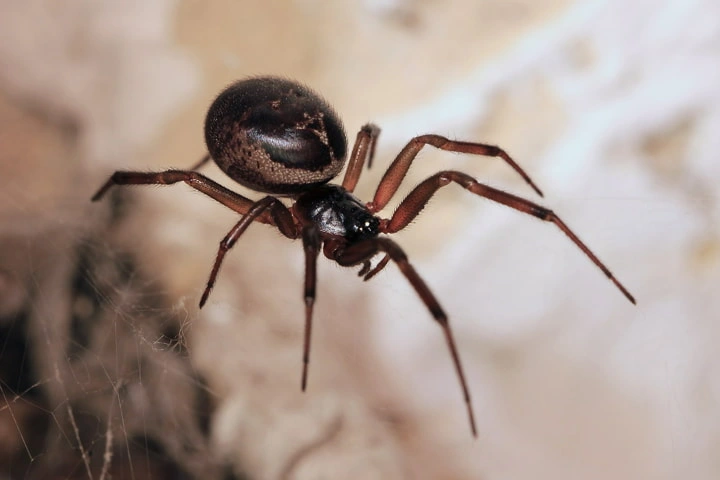Stories of Invasive species adversely affecting local flora and fauna are innumerable and the latest in this list is the trapping of two bats by a spider not native to the United Kingdom, states a report in livescience.com.
Of the two bats, one survived due to timely intervention by a resident who helped the creature to become free from the web.
The spider in question is the noble false widow spider or Steatoda nobilis as it is scientifically known. This creature is native to the Canary Islands and Madeira archipelago but today it is found in Americas, Europe and Asia.
The year it arrived in England was 1879. Then it slowly moved to make Wales, Ireland and Scotland its home. From then on till now, there had been no instance of S. nobilis preying on mammals or bats. It was in July last year that a wildlife artist Ben Waddams of England’s Shropshire, clicked images of bats trapped in the web of this spider.
The details of this incident were published in Ecosphere journal.
Waddam’s shots which went viral on social media caught the attention of scientists. In a video, Michel Dugon, who heads the Venom Systems Lab at National University of Ireland, Galway said: “We actually understood very quickly that this was a first.” Dugon is the senior author of the study.
The spider was a mature female noble false widow as identified by the scientists and it had cleverly spun its web exactly below the bat colony entrance. Waddams observed a bat pup dead in this web with its wings wrapped tightly in silk and its appearance was shrivelled pointing to the spider feeding on it.
The report discussing the spider’s poison said that it is a potent neurotoxin which has some of the toxins that are present in a true black widow spider. This venom helps the spider to paralyse the prey which includes small vertebrates like lizards.
In a statement, Aiste Vitkauskaite who is Venom Systems Lab researcher and the study’s co-author said: "False widow spiders, just as their close relatives black widow spiders, have extraordinary prey capture techniques and remarkably potent venom, which allows them to capture small vertebrate prey many times larger than the spider itself with surprising ease.”
Also read: Scientists unravel mystery of why poison of King Baboon spider causes so much pain in humans
After the baby’s body fell down, an adult bat had got lured into the trap and since it was alive and yet to be enveloped in silk, Waddams rescued it.
The bats were recognised as either the common pipistrelles (Pipistrellus pipistrellus) or soprano pipistrelles (Pipistrellus pygmaeus). These two species found in Britain are small and can hardly be distinguished from each other.
What is pertinent is that these species of bats are protected under the Wildlife and Countryside Act and the Conservation of Habitats and Species Regulations, declared the statement. Capturing, injuring or killing of these bats or obstructing or damaging access to their places of rest and breeding are punishable under law, according to Natural England and Department for Environment, Food & Rural Affairs.
Also read: Multi-coloured jumping spiders are colour blind!
Commenting on this, John Dunbar the study’s first author and Irish Research Council postdoctoral fellow in the Venom Systems Lab stated in the statement: “This study presents yet another example of the invasive impact by the noble false widow spider on native species. We know they are much more competitive than native spiders, and this further confirms their impact on prey species.”
This spider has been known to hunt Ireland’s protected species, viviparous lizards or Zootoca vivipara.
Every continent except Antarctica has arachnids that live off small and young bats that feed on insects and now the latest to join them is the noble false widow spider.




















